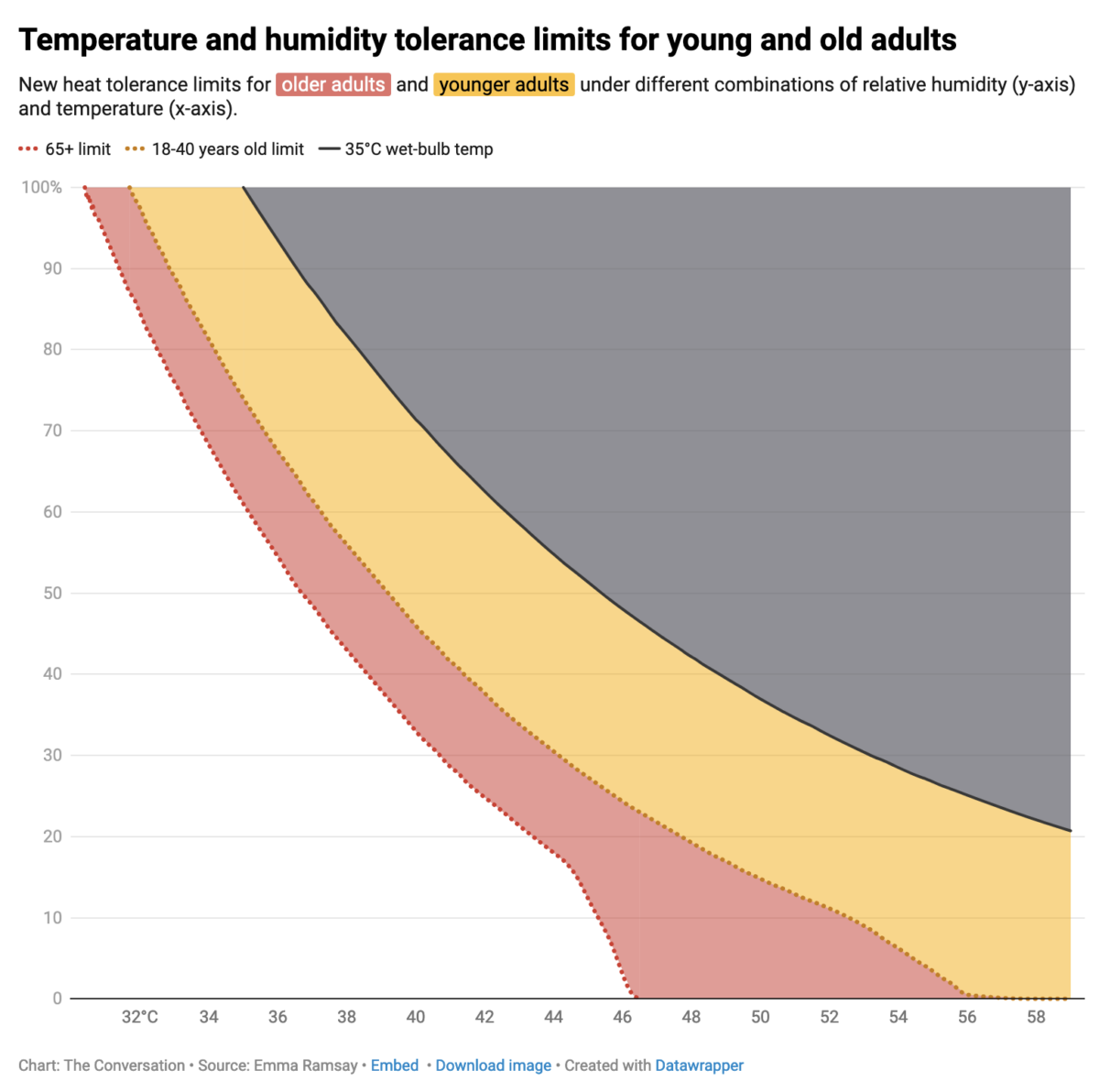
Our new research published in Nature Climate Change shows the upper limits of human heat tolerance were breached for a total of 43 hours over the six days of Hajj. During these periods, heat and humidity passed beyond the point at which our bodies are able to cool down.
To do the Hajj, you have to walk between 6 and 21 kilometres each day. Many pilgrims are older and not in good health, making them more vulnerable to heat stress.
This year’s pilgrimage started on June 14. Over the next six days, the temperature topped 51°C, while “wet-bulb temperatures” (the combination of temperature and humidity) rose as high as 29.5°C.
In 2010, researchers first proposed a theoretical “survival limit,” which is a wet-bulb temperature of 35°C.
But we now know the true limit is actually much lower. Experiments testing human physiological limits inside controlled heat chambers, backed up by sophisticated models, have revealed new heat tolerance limits.
These limits vary depending on your age and how humid it is. For example, the tolerance limit for young people is around 45°C at 25% humidity but only 34°C at 80% humidity. For older people, the limits are lower still—32.5°C at 80% humidity is dangerous.
These limits are the point at which it is too hot and humid for your body to cool itself down, even at rest. Sustained exposure leads to your core body temperature rising, heatstroke and after a number of hours, death.